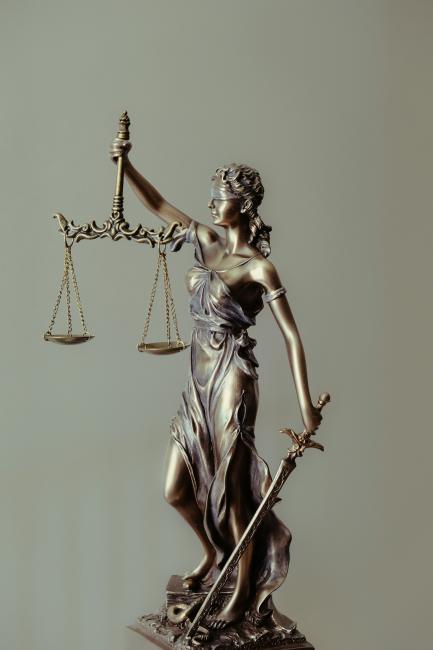Actualités
Aude Lemogne and Aymeric Thuault founders and directors of Link Management, a Luxembourg based art advisory, have launched a new art lending platform in partnership with Swiss bank Reyl Group. Griffin Art Partners plans to provide bespoke finance solutions for high-end collectors and art professionals through securitisation of non-recourse loans using fine art as collateral. Link Management will act as the art advisors for the service whilst Reyl Group will manage the platform and provide knowledge of innovative structuring solutions.
We spoke to the Lemogne, Thuault and Xavier Ledru the three leads on the new project.
How did you have the idea to develop a new art lending platform with the Reyl Group?
Thuault: We have been active in the art financing industry for years, as our art consultancy firm provided financing directly to art professionals, though only under a co-ownership schemes. Over time, we realized that collectors could also be interested in art financing, not only to finance the development of their collection but also to fund other personal needs. Rather than considering a collection as an inert entity and a source of costs (insurance, storage, etc.) it now becomes “leverageable”.
Lemogne: We are art advisors. We help collectors manage and build their collections and investors diversify their wealth in art. Aymeric and I have over 10 years of experience in the financial industry prior to become art advisors. This former experience has given us a thorough analytical rigor. We therefore analyse an art piece with both an aesthetic and historical angle, as well as a financial investment while implementing a risk management methodology.
How did your interest in art lead to this new offer?
Ledru: We have been active in art for a long time through our family office. We had long identified art as a potential collateral item through which it was possible to adapt an innovating wealth management tool, and we wished to position ourselves on this market segment. We initially thought about setting-up an art fund. However, after in-depth market research, we realized that it was not a product suited to our private clients. We then searched for an art product with a lower level of risk. It was at that time we met Link Management who had already experience in that field, bringing great expertise in terms of art analysis and due diligence. As Link Management and ourselves had the same vision and philosophy regarding the current need of the art borrowers and investors, we decided to partner together to structure the Griffin Art Partners offer,
Thuault: Through our experience in art finance, we have mainly came across two different models: direct co-ownership and straightforward art loans. The innovative aspect of our art lending platform resides in the fact that we securitize each loan together with its collateral, creating thus a different financial product for art investors. These asset backed notes provide a fixed income return of 5% to 10% per year on a relatively short-term horizon of 1 to 3 years fully secured by prestigious artworks. These financial instruments represent a really interesting alternative to an art fund or a direct purchase: as the loan-to-value is set at a maximum of 50% of the low estimate of the collateral , in case of default, the value of the art would need to decrease by at least 50% to give rise to a loss to the investors, a high loss which therefore implies a small risk.
What are the true advantages of such a platform for the collector-borrowers?
Thuault: Each borrower has total discretion in regards to the use of the proceeds, and no exotic clause comes to harden the default procedure, such as call option with a low strike granted to a partner company, so there are no barriers preventing the vehicle from taking possession of the collateral should a default event occurs. We offer non-recourse loan and therefore never take into consideration the credit risk of the borrower . We have been extremely pleased so far by the positive feedback from our clients, and since our launch last June, we have already exceeded our target in terms of volume for the year. The loan quantum has also rapidly increased. As an example, we are currently looking at transactions on collections between EUR 25 million and EUR 50 million.
Ledru: Although clients of the bank are pleased with this innovative offer, Borrowers and investors are not necessarily clients of the bank. Moreover the art backed notes issued by Griffin Art Partners have an international ISIN code and can therefore be easily subscribed by family offices, private debt funds or private banks who prefer to clear their financial products through Euroclear or Clearstream.
Lemogne: We are currently able to offer our services in most of the European jurisdictions, including Switzerland and the United Kingdom. In terms of eligibility, we mainly select works produced after 1875 (the beginning of the Impressionist movement), as the art movements since that date represent over 80% of the art market in terms of transaction value. However our team also benefits from a solid experience in the Old Masters’ period, and can consequently accept work created since the Renaissance as long as they meet our eligibility criteria.
Ledru: Griffin Art Partners has been designed to last. We thus enforce strict eligibility criteria relating to the due diligence and valuation carried out by Link Management. For the moment, we require the collateral to be dispossessed from its owners and their handling to be managed under the direct and efficient control of the vehicle.
Would you consider art as a safe haven?
Ledru: Art (especially the high-end segment of the market) is considered a safe haven. Art can also constitute an innovating tool for investors’ portfolio diversification, as the art market total return has traditionally shown a low correlation with traditional asset classes. We are therefore not surprised by the strong appetite shown by investors for the art backed notes issued by Griffin Art Partners.
Thuault: Art must be regarded as a diversification tool for private investors rather than for institutional investors mainly because the art market does not yet have the depth to accommodate volume requirements of large institutional investors such as mutual funds. This being mentioned, art remains particularly attractive in terms of performance over traditional asset classes such as equity, bonds, commodities, and gold especially during periods of strong inflation. It is also worth noting that the recent years have shown the strong resilience of high-end art in times of low rate policy.

